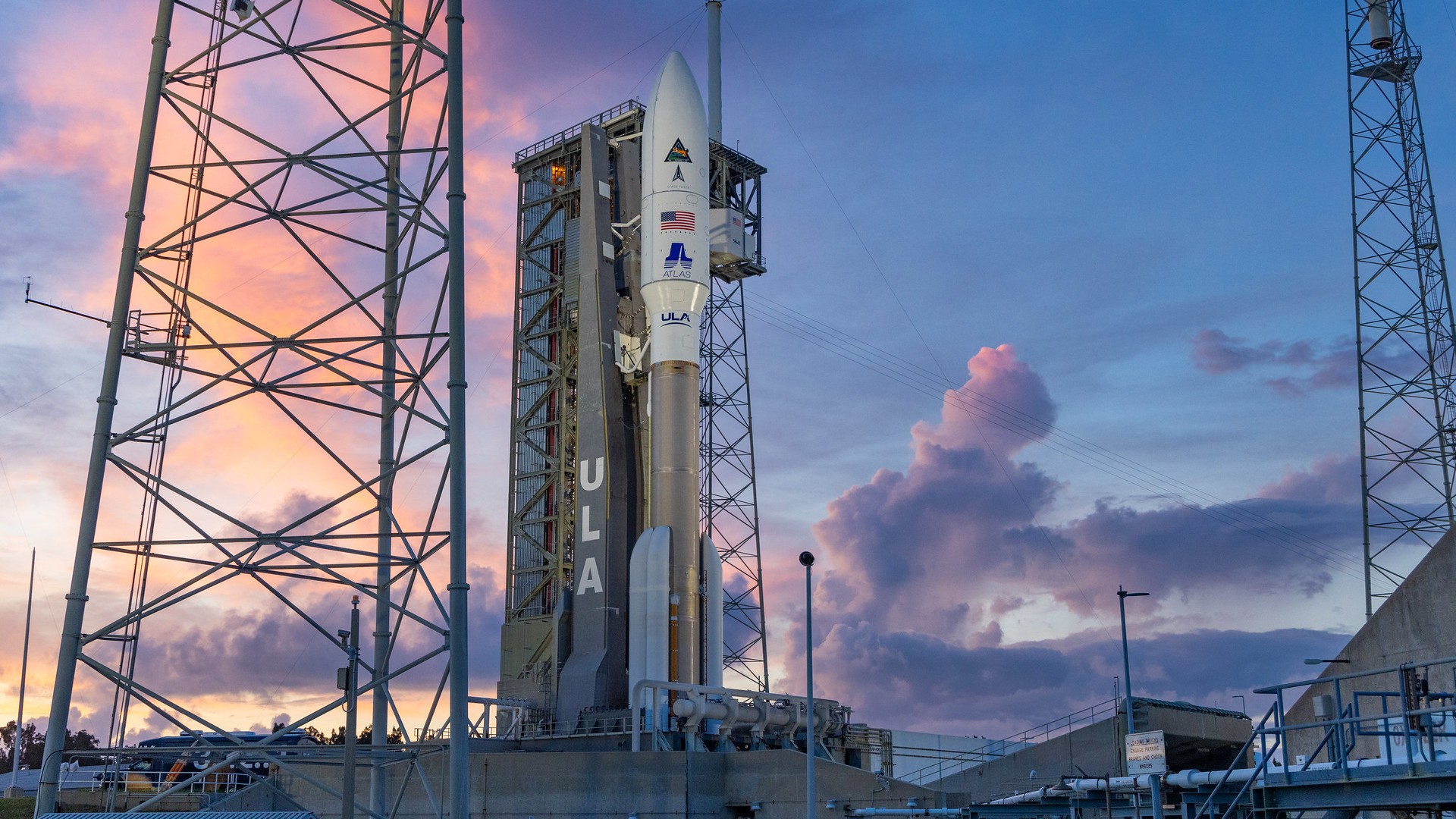The United States Space Force is about to get an unprecedented view of some of the most distant reaches of Earth orbit.
The United Launch Alliance (ULA) will launch the multi-payload Silent Barker mission, also designated as NROL-107, on Tuesday (Aug. 29) on the behalf of the Space Force and the National Reconnaissance Office (NRO). Liftoff is set for 8:34 a.m. ET (1234 GMT) on an Atlas V rocket from Space Launch Complex 41 at Cape Canaveral Space Force Station in Florida.
The launch will be livestreamed by ULA beginning at 8:15 a.m. ET (1215 GMT) on Tuesday. You can watch it live on Space.com, courtesy of the company, or directly from ULA's YouTube channel.
Related: Atlas V rocket rolled to pad for 'Silent Barker' spysat launch (photos)

Silent Barker will mark the 18th and final Atlas V mission for the NRO to launch from Cape Canaveral; ULA will soon replace the rocket with its new Vulcan Centaur. The mission will place multiple highly secretive payloads into geosynchronous orbit, the region of space some 22,236 miles (35,786 km) up that allows spacecraft to remain stationary above fixed points on Earth.
Space Force Lt. General Michael Guetlein, commander of Space Systems Command, said in a pre-launch teleconference on Monday (Aug. 28) that the Silent Barker mission is designed to "deter aggression" through letting the United States' potential adversaries know that the Space Force is keeping a close watch on what happens in geosynchronous orbit (GEO).
"A huge element of deterrence is the ability for the adversary to know what we can and cannot see," Guetlein said. "So we actually want our competitors to know that we have eyes in GEO and that we can see what's happening in GEO. Not only are we going to maintain custody and the ability to detect what's going on in GEO, but we'll have the indications and warnings to know there's something out of the normal occurring, and that goes a long way towards deterrence."
Silent Barker will act as a "watchdog" in geosynchronous orbit, keeping an eye on any satellites that reposition themselves to get a better look at U.S. spacecraft or even to carry out counterspace attacks, according to NRO director Chris Scolese.
"Satellites do move in geosynchronous orbit," Scolese said. "You've heard about communication satellites moving from one location to another to provide better coverage for other areas. Certainly we want to be able to see that so we know what is going on in that area.
"But we also want to know if there is something going on that is unexpected, or shouldn't be going on that could potentially represent a threat to a high value asset, either ours or one of our allies'," Scolese added.
The exact capabilities of Silent Barker remain unknown. During Monday's teleconference, officials confirmed that Silent Barker will consist of multiple payloads, although neither the NRO nor Space Force are sharing exact numbers — nor is either agency divulging the manufacturers and contractors with whom they are partnering to develop the Silent Barker spacecraft, Scolese said in response to a question from Space.com.
However, in 2021, Air Force Space and Missile Systems issued a contract modification to defense contractor L3 Harris, noting that the total value of its Silent Barker contract was over $283 million. A previous budget estimate conducted by the Government Accountability Office estimated the cost of the program to be $994 million, with a planned full operational capability scheduled for 2026.
Silent Barker's data will be processed by the National Space Defense Center in Colorado Springs, while the satellite itself will be operated by the NRO.
Silent Barker's launch comes after the U.S. Space Force has established units dedicated to tracking threats in orbit and even targeting enemy satellites.







